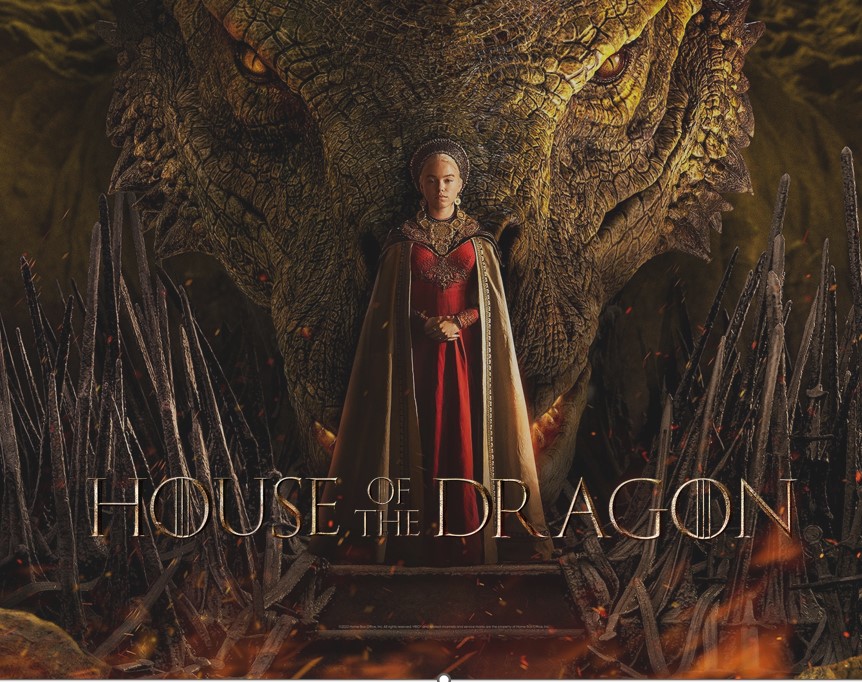
“Dracarys.” In Game of Thrones, the word is a command for the show’s iconic dragons to incinerate everything in their path. Consider it also what we set out to do with the U.S. marketing launch for HBO Max’s GoT prequel, House of the Dragon: burn down the house.
Despite Game of Thrones’ massive popularity, there were two main concerns that would affect our integrated approach to unveiling the prequel.
The first were concerns about franchise fatigue. Game of Thrones remains the #1 viewed HBO title of all time, and its cultural ubiquity was something we would need to consider heavily.
Related: the final season of Game of Thrones was not an outright triumph. NME reported fans found the show’s finale the second most disappointing ever, meaning our campaign needed to establish a palpable energy to get lapsed fans to emotionally reinvest in House of the Dragon’s universe.
The state of the streaming environment at launch further complicated matters. House of the Dragon was HBO Max’s first tentpole post the WB-Discovery (WBD) merger. New CEO David Zaslav needed a calculated programming win to establish confidence in his leadership. It was on us to drive new subscribers and motivate enduring popularity for potential audience expansion.
From past successes with key HBO Max properties, we knew an integrated approach across social, digital, OOH, experiential, and home can inspire an initial wave of new subscribers (not to mention high viewership), but also longtail investment in a show’s plotline, characters, and audience discourse.
Given the cultural cachet of the show’s predecessor, we knew the premiere for House of the Dragon had to feel like a cultural event.
Despite the GoT criticism, we knew millions of fans would be immediate evangelists for a deeper exploration of Westeros. We would leak organic teasers like key art and first look content a year from launch to switch on early social buzz, giving fans ample time to speculate.
Four months from launch, we began our integration in earnest, coinciding a talent panel and activation during the debut of the first global trailer at San Diego Comic Con, a rite of passage for a show with a deep mythology.
After owning the conversation at Comic Con, we set about conquering the mass media market, befitting our show’s reputation.
What better vessel than the show’s iconic dragons?. We built eye-catching interactive 3D billboards and installations featuring the dragons, setting them loose across NYC/LA. Simultaneously, we took over 49 LiveNation concert venues, populating 114 live shows with our custom dragon installations.
Meanwhile, we built a sophisticated infrastructure of bespoke partnerships with media outlets that would run in parallel with an intricate paid and organic push on social, deepening impact and exposure for viewers across multiple screens.
We did this with a string of first-to-market integrations across unconventional platforms. Partnering with Riot Games, we became the first in-game sponsor of the pro-eSport Championship League of Legends Series. We immersed viewers in the behind-the-scenes details with first-of-its-kind content on Roku home screens, connecting multi-screen users to our robust assortment of social activations. In addition to large spends on Twitter and Meta, we utilized a first-adopter PULSE Beta filter on TikTok and a custom Snapchat filter, inspiring fans to pledge their allegiance to the North.
We set aside a healthy budget for traditional mediums, working in show details to the most popular audio programs on the airwaves, and powering mass incremental reach via WB-Discovery’s vast TV connections.
With “Dragon Week” we took over iHeartRadio week on the airwaves with HOTD chatter, and flexed the WBD TV portfolio to reach millions of US households on linear and digital, supplementing a complex media channel buy. We leveraged WBD’s digital and social portfolio, from taking over CNN to Food Network shows and having talent change their social media profiles to the Westeros theme.
Lastly, we made the premiere the cultural event of the year. Partnering with Conde Nast, we threw experiential watch parties in key locations, haloing each event with social content that coincided with high-traffic digital banners across a variety of publications like GQ, Vogue, and Pitchfork.
Pulsing paid spends with each new episodes, we ensured House of the Dragon stayed top of mind all throughout its triumphant first season.
Our integrated campaign did indeed burn down the house. No, truly, it broke HBO Max (temporarily).
On premiere day (Sunday, Aug. 21), episode one reached nearly 10 million viewers across linear and HBO Max platforms in the U.S. That mark stands as the largest original series premiere audience in HBO history, even besting its predecessor. As such, the HBO Max app crashed due to unprecedented usage.
Once the app was upgraded to serve the increase in viewership, we boosted the audience further. Within the first week, Ep1 tallied 25MM viewers, the fastest viewership growth ever recorded for a single episode in streaming history.
Once hooked, viewers couldn’t get enough, perfectly playing into our strategy to sustain the integrated success on social. House of the Dragon maintained the number one trending topic on Twitter/Google Trends every Sunday night until the season finale.
The campaign was an absolute triumph for HBO Max and WB-Discovery’s streaming prospects. Streaming subscriptions rose nearly 95 million across global customers on HBO, HBO Max and Discovery+ in Q3, a 23% increase vs. Q1, and the #1 subscription driver for HBO Max.
From fanning the flames on social, to setting dragons loose across NYC skyscrapers, to sending League of Legends athletes on quests for Westeros banners, our campaign brought Westeros back with a vengeance, ensuring House of the Dragon was the biggest hit of the year.
“Dracarys.”









